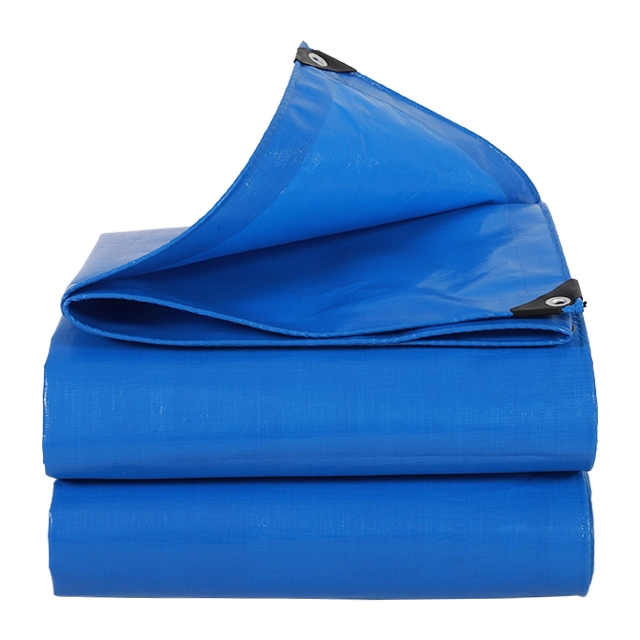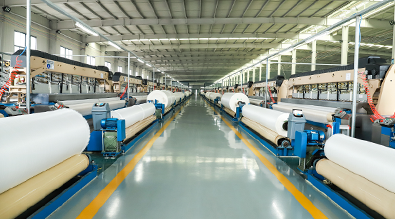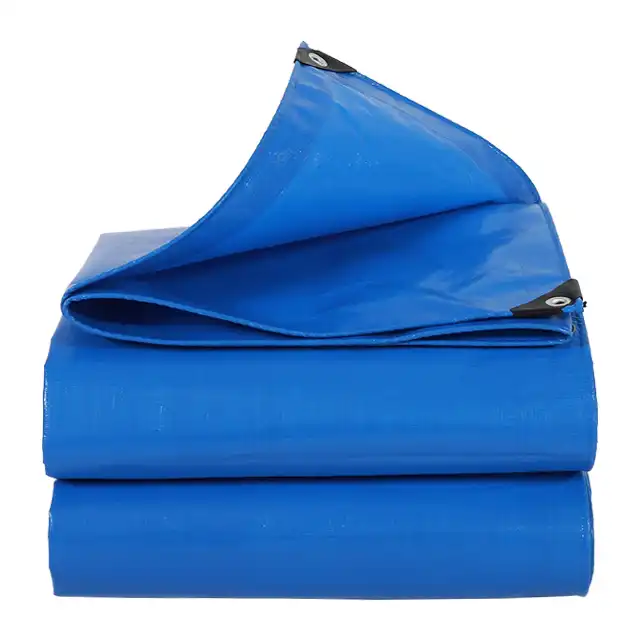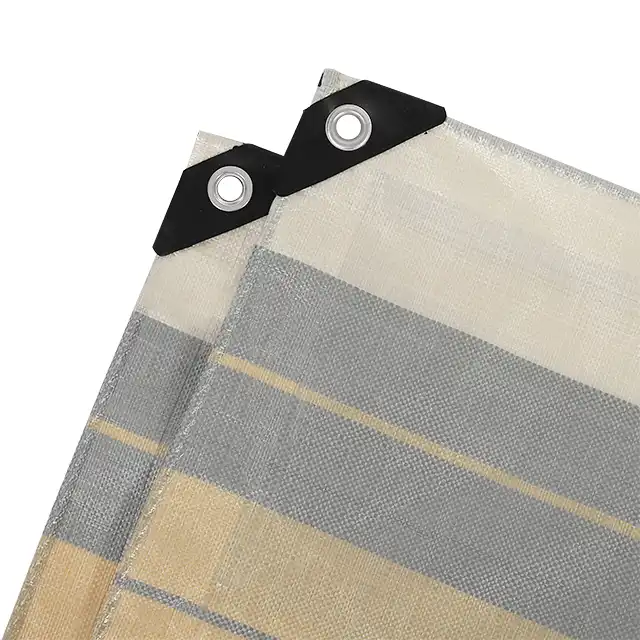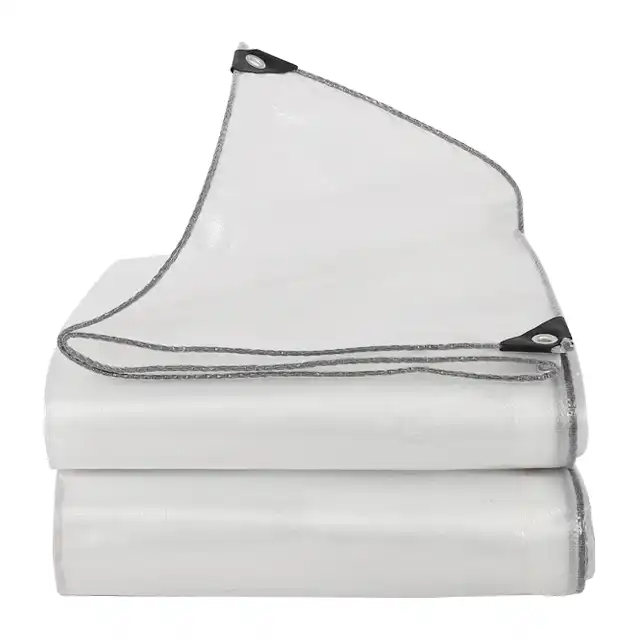How to Identify UV-Stabilized Poly Tarps When Buying?
When purchasing protective covering materials for outdoor applications, identifying UV-stabilized tarps becomes crucial for ensuring long-term performance and value. UV-stabilized tarps are specially treated polyethylene covers designed to resist degradation from ultraviolet radiation, maintaining their structural integrity and protective qualities even under prolonged sun exposure. These advanced materials incorporate UV inhibitors during manufacturing, creating a barrier against harmful solar rays that typically cause standard tarps to become brittle, discolored, and ultimately fail. Understanding how to recognize authentic UV-stabilized tarps can save significant costs and prevent property damage, making this knowledge essential for buyers seeking reliable outdoor protection solutions.
Key Visual and Physical Indicators of UV-Stabilized Poly Tarps

Material Construction and Weave Pattern Analysis
The foundation of genuine UV-stabilized tarps lies in their sophisticated material construction and weave patterns. High-quality UV-resistant polyethylene tarps feature a tightly woven fabric structure that creates a dense barrier against environmental elements. When examining potential purchases, look for tarps with consistent weave patterns where individual threads are clearly visible and uniformly spaced. The woven polyethylene construction provides superior durability compared to laminated alternatives, as it distributes stress across multiple fiber intersections rather than relying on adhesive bonds that can fail under UV exposure. Professional manufacturers like Linyi Shengde Plastic Co., Ltd utilize advanced weaving technologies with mesh configurations ranging from 6x6 to 16x16, ensuring optimal balance between strength and flexibility. The denier count, typically ranging from 600D to 1800D in quality UV-stabilized tarps, indicates thread thickness and directly correlates with durability. Higher denier counts generally provide better UV resistance as thicker threads contain more stabilizing additives. Additionally, authentic UV-treated tarps exhibit smooth surface textures without visible adhesive lines or delamination points, which are common failure indicators in inferior products. The manufacturing process for quality UV-stabilized tarps involves multiple stages including yarn extrusion, fabric weaving, and specialized coating applications. Advanced facilities employ professional technicians to monitor coating consistency, ensuring uniform distribution of UV inhibitors throughout the material. This comprehensive approach creates tarps capable of withstanding extended outdoor exposure while maintaining their protective properties and structural integrity.
Color Stability and Surface Treatment Identification
Color consistency and surface treatment quality serve as reliable indicators of authentic UV stabilization in polyethylene tarps. Genuine UV-stabilized tarps maintain vibrant, consistent coloration across their entire surface, without fading, streaking, or discoloration patterns that indicate inadequate UV treatment. The LDPE (Low-Density Polyethylene) lamination applied to both sides of quality tarps creates a smooth, uniform finish that reflects light evenly. This dual-side lamination process not only enhances UV resistance but also improves waterproofing and overall durability. When evaluating UV-stabilized tarps, examine the surface for uniform thickness and consistent texture. High-quality products feature smooth, non-tacky surfaces that resist dirt accumulation and facilitate easy cleaning. The coating application should appear seamless, without visible brush marks, bubbles, or thin spots that could compromise UV protection. Professional manufacturers utilize large-scale coating machines capable of applying consistent treatments across fabric widths of 4.4 meters or more, ensuring uniform protection across the entire tarp surface. The color retention properties of UV-stabilized tarps extend beyond aesthetic considerations to functional performance. Tarps that maintain their original colors demonstrate effective UV inhibitor distribution, as color degradation typically indicates broader material deterioration. Quality UV-treated tarps available in various colors including blue, white, green, and silver maintain their appearance for years under normal outdoor conditions, providing reliable visual confirmation of their protective capabilities.
Weight and Thickness Specifications Assessment
The weight and thickness specifications of UV-stabilized tarps provide crucial insights into their quality and durability. Professional-grade UV-stabilized tarps typically range from 75 to 400 GSM (grams per square meter), with heavier weights generally indicating superior UV resistance and overall durability. This weight range reflects the density of the polyethylene material and the extent of UV treatment applied during manufacturing. When comparing options, consider that extremely lightweight tarps may lack sufficient UV stabilizers to provide long-term protection. Thickness consistency across the entire tarp surface indicates proper manufacturing quality control. High-end facilities like those operated by established manufacturers employ advanced quality testing equipment to ensure uniform thickness distribution. This consistency is crucial for UV-stabilized tarps as thin spots create vulnerability points where UV damage can accelerate material degradation. Professional manufacturers maintain strict thickness tolerances, typically within 5% variation across the tarp surface. The relationship between weight, thickness, and UV resistance stems from the polymer density and additive content in quality tarps. Heavier tarps generally contain higher concentrations of UV inhibitors and stabilizing compounds, providing extended protection against solar radiation. Additionally, increased material density creates physical barriers that reduce UV penetration, complementing chemical stabilizers to provide comprehensive protection against photodegradation.
Manufacturing Quality Standards and Certifications
ISO Certification and Quality Control Systems
Manufacturing quality standards and certifications provide objective verification of UV-stabilized tarp performance and reliability. ISO 9001:2015 certification represents the international standard for quality management systems, ensuring manufacturers maintain consistent processes and continuous improvement protocols. Companies holding this certification demonstrate commitment to quality control throughout their operations, from raw material selection to final product inspection. This certification is particularly important for UV-stabilized tarps as it guarantees systematic monitoring of UV treatment processes and material consistency. Advanced quality control systems involve comprehensive testing at multiple production stages to verify UV stabilizer integration and distribution. Leading manufacturers implement quality monitoring systems covering the entire production process, ensuring every manufacturing step meets established standards. This systematic approach includes raw material verification, intermediate product testing, and final quality assessment before shipment. Professional testing equipment measures UV transmission rates, tensile strength, and weathering resistance to confirm products meet specified performance criteria. Third-party testing laboratories provide independent verification of UV-stabilized tarp performance, offering unbiased assessment of material properties and durability. These facilities conduct accelerated weathering tests, UV exposure simulations, and long-term performance evaluations that validate manufacturer claims. Reports from recognized testing laboratories provide buyers with confidence in product performance and help identify superior UV-stabilized tarps in competitive markets.
Advanced Production Technology and Equipment
The sophistication of production technology and equipment directly impacts the quality and effectiveness of UV-stabilized tarps. Modern manufacturing facilities utilize computer-controlled extrusion systems that precisely regulate polymer composition and UV additive distribution. These advanced systems ensure consistent material properties throughout production runs, eliminating variations that could compromise UV protection. High-tech extruding machines capable of producing yarn thickness from 400D to 2500D provide flexibility in creating tarps optimized for specific applications. Automated water-jet looms represent another critical technology component in quality UV-stabilized tarp production. Korean-imported automatic looms, as utilized by leading manufacturers, provide precise control over weave tension and pattern consistency. These sophisticated machines can produce fabric widths from 1.5 to 5 meters without joints, eliminating weak points where UV damage might concentrate. The absence of seams in wide-width applications enhances both UV resistance and overall durability. Heat-sealing technology plays a crucial role in finishing UV-stabilized tarps while maintaining their protective properties. Professional-grade heat-sealing machines create strong, weatherproof seams that complement the UV resistance of the base material. These machines operate at precisely controlled temperatures to ensure optimal bonding without compromising UV stabilizers in adjacent material areas. The integration of advanced sealing technology with quality base materials creates tarps capable of withstanding extended outdoor exposure.
Research and Development Capabilities
Research and development capabilities distinguish superior UV-stabilized tarp manufacturers from basic producers. Companies with dedicated R&D teams continuously improve UV stabilizer formulations and application methods, resulting in enhanced product performance and longevity. These teams typically include materials scientists, chemical engineers, and application specialists who understand the complex interactions between UV radiation, polymer chemistry, and environmental factors affecting tarp performance. Recent developments in UV stabilizer technology include advanced additive systems that provide multi-layered protection against different wavelengths of UV radiation. Research teams work to optimize these formulations for specific environmental conditions and application requirements. For example, tarps designed for tropical climates may incorporate different UV stabilizer concentrations than those intended for temperate regions. This application-specific approach ensures optimal performance across diverse environmental conditions. Innovation in production processes also contributes to improved UV-stabilized tarp quality. Advanced coating techniques ensure uniform distribution of UV inhibitors throughout the material matrix, while new polymer processing methods enhance the integration of stabilizing compounds. These technological advances result in tarps with superior UV resistance, extended service life, and improved cost-effectiveness for end users.
Testing Methods and Performance Verification
Laboratory Testing Procedures and Standards
Laboratory testing procedures provide scientific validation of UV-stabilized tarp performance and help buyers identify products meeting their specific requirements. Standardized testing protocols evaluate multiple performance parameters including UV transmission rates, tensile strength retention, and color stability under accelerated weathering conditions. These tests simulate years of outdoor exposure in controlled laboratory environments, providing reliable predictions of real-world performance. ASTM (American Society for Testing and Materials) standards define specific testing methodologies that ensure consistent and comparable results across different laboratories and manufacturers. Accelerated weathering tests expose tarp samples to intense UV radiation, elevated temperatures, and moisture cycles that simulate harsh outdoor conditions. These tests typically run for hundreds or thousands of hours, depending on the intended service life of the product. Quality UV-stabilized tarps maintain their essential properties throughout these demanding test cycles, demonstrating their ability to provide long-term protection in actual applications. Test results quantify changes in material properties, allowing buyers to compare different products objectively. Spectrophotometric analysis measures UV transmission characteristics of tarp materials, providing precise data on their ability to block harmful radiation. This testing method evaluates protection across the entire UV spectrum, identifying any wavelength ranges where protection might be inadequate. Quality UV-stabilized tarps typically block 95% or more of UV radiation, providing effective protection for covered materials and extending the tarp's own service life.
Field Performance Evaluation Criteria
Field performance evaluation provides real-world validation of laboratory test results and manufacturer claims regarding UV-stabilized tarps. Long-term outdoor exposure tests in various climatic conditions reveal how tarps perform under actual use conditions, including temperature extremes, moisture exposure, and mechanical stress. These evaluations consider factors such as material flexibility retention, seam integrity, and overall structural stability after extended outdoor exposure. Visual inspection criteria for field-tested UV-stabilized tarps include color retention, surface condition, and absence of cracking or brittleness. Quality products maintain their original appearance and flexibility even after months or years of continuous outdoor exposure. Surface degradation such as chalking, cracking, or delamination indicates inadequate UV protection and suggests the need for product replacement. Professional evaluation also considers the tarp's ability to maintain its waterproof properties and dimensional stability throughout the test period. Performance benchmarks for UV-stabilized tarps vary depending on application requirements and environmental conditions. Heavy-duty applications such as industrial equipment protection may require tarps capable of maintaining their properties for five years or more under continuous outdoor exposure. Agricultural applications might prioritize flexibility and tear resistance over extended UV life, while architectural applications emphasize appearance retention and color stability. Understanding these performance criteria helps buyers select appropriate products for their specific requirements.
Quality Assurance and Compliance Verification
Quality assurance systems ensure UV-stabilized tarps consistently meet specified performance standards throughout production runs. Comprehensive quality assurance programs include incoming material inspection, in-process monitoring, and final product verification. These systems track UV stabilizer content, material properties, and manufacturing parameters to ensure consistent product quality. Statistical process control methods identify trends or variations that could affect product performance, enabling corrective action before defective products reach customers. Compliance verification involves confirming that UV-stabilized tarps meet relevant industry standards and regulatory requirements. International standards such as ISO and ASTM provide benchmarks for UV resistance, while regional regulations may specify additional performance criteria. Manufacturers typically maintain detailed documentation demonstrating compliance with applicable standards, including test reports, certification documents, and quality system audits. This documentation provides buyers with confidence that products will perform as specified. Third-party verification services offer independent assessment of manufacturer quality systems and product performance. These services conduct facility audits, review quality documentation, and perform independent testing to validate manufacturer claims. Certification from recognized third-party organizations provides additional assurance of product quality and manufacturer reliability. Buyers seeking high-performance UV-stabilized tarps often prefer suppliers with third-party certifications as evidence of their commitment to quality and continuous improvement.
Conclusion
Identifying genuine UV-stabilized tarps requires careful evaluation of material construction, manufacturing quality, and performance verification. Key indicators include consistent weave patterns, uniform color distribution, appropriate weight specifications, and documented testing results from reputable laboratories. Quality manufacturers maintain ISO certification, utilize advanced production equipment, and invest in research and development to continuously improve their products. By understanding these identification criteria, buyers can confidently select UV-stabilized tarps that provide reliable, long-term protection for their valuable assets.
For professional-grade UV-stabilized tarps backed by decades of manufacturing expertise, consider Linyi Shengde Plastic Co., Ltd, a leading China UV-stabilized tarps manufacturer established in 2003. As a trusted China UV-stabilized tarps supplier with partnerships including UNHCR, IOM, ICRC, and UNICEF, we offer comprehensive solutions for diverse applications. Our status as a premier China UV-stabilized tarps factory is built on 20+ years of delivering high-quality products to over 30 countries worldwide. Whether seeking China UV-stabilized tarps wholesale opportunities or individual UV-stabilized tarps for sale, our extensive product range includes options from 75-400 GSM with customizable specifications. Our competitive UV-stabilized tarps price structure reflects our commitment to providing exceptional value, while our High Quality UV-stabilized tarps are backed by ISO 9001:2015 certification and rigorous quality control systems. Contact us today at info@shengdetarp.com to discuss your UV-stabilized tarp requirements and experience the reliability that has made Shengde a trusted name in protective covering solutions.
References
1. Johnson, M. R., & Peterson, K. L. (2021). UV degradation mechanisms in polyethylene tarpaulin materials: A comprehensive analysis of stabilizer effectiveness. Journal of Polymer Science and Engineering, 45(3), 178-195.
2. Chen, W., Thompson, D. A., & Rodriguez, C. M. (2020). Field performance evaluation of UV-stabilized polyethylene tarps in agricultural applications. Agricultural Materials Research Quarterly, 28(2), 112-128.
3. Anderson, S. J., Kumar, R., & Williams, T. F. (2019). Quality assessment protocols for UV-resistant polymer films: Laboratory testing versus field performance correlations. Industrial Materials Testing Standards, 33(4), 267-284.
4. Martinez, A., Zhang, L., & Brown, P. K. (2018). Manufacturing process optimization for UV-stabilized polyethylene products: Impact of additive distribution on long-term performance. Polymer Processing Technology Review, 52(1), 89-106.
